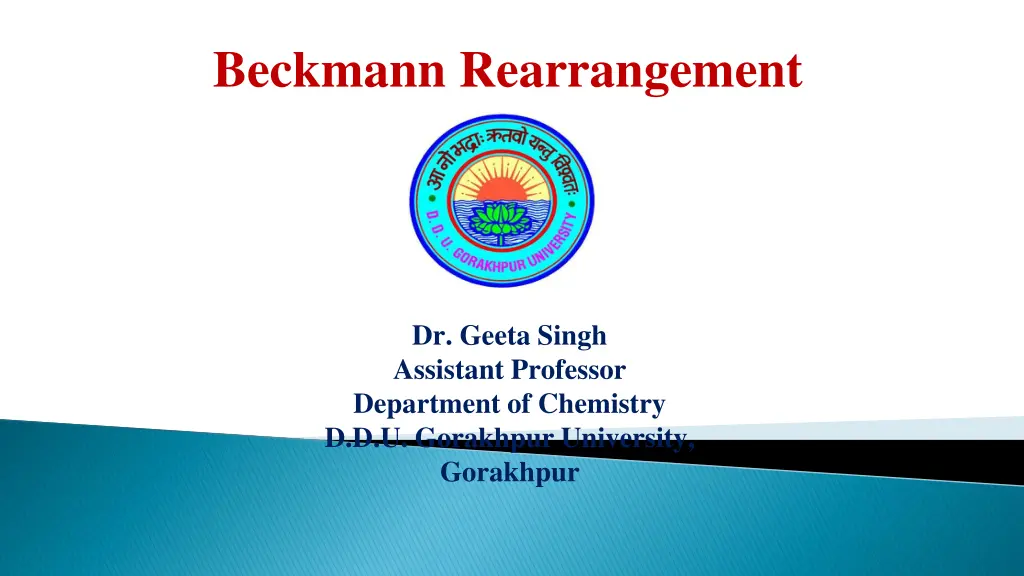
Beckmann Rearrangement: Mechanism, Applications, and Examples
Beckmann Rearrangement is a chemical reaction converting ketoximes to amides, named after Ernst Otto Beckmann. It involves alkyl migration, solvolysis, and tautomerization. This rearrangement is used in drug synthesis for medicines like Paracetamol and in polymer synthesis for nylon production. Migratory aptitude and reaction mechanisms are essential aspects of this reaction.
Uploaded on | 1 Views
Download Presentation

Please find below an Image/Link to download the presentation.
The content on the website is provided AS IS for your information and personal use only. It may not be sold, licensed, or shared on other websites without obtaining consent from the author. If you encounter any issues during the download, it is possible that the publisher has removed the file from their server.
You are allowed to download the files provided on this website for personal or commercial use, subject to the condition that they are used lawfully. All files are the property of their respective owners.
The content on the website is provided AS IS for your information and personal use only. It may not be sold, licensed, or shared on other websites without obtaining consent from the author.
E N D
Presentation Transcript
Beckmann Rearrangement Dr. Geeta Singh Assistant Professor Department of Chemistry D.D.U. Gorakhpur University, Gorakhpur
Contents Beckmann Rearrangement Reaction Mechanism Migratory Aptitude Applications in Drugs Synthesis Applications in Polymer Synthesis References
Beckmann Rearrangement The acid-catalysed conversion of ketoximes to amides is known as Beckmann rearrangement. The Beckmann rearrangement, named after the German chemist Ernst Otto Beckmann (1853-1923). This rearrangement is occurs in both cyclic and acyclic compounds. Cyclic oximes yield lactams and acyclic oximes yield amides.
Reaction Mechanism The most common reaction mechanism of the Beckmann rearrangement consists of an alkyl migration anti-peri planar to the expulsion of a leaving group to form a nitrilium ion. This is followed by solvolysis to an imidate and then tautomerization to the amide.
: : Tauto.
Migratory Aptitude The relative migratory aptitude of different groups in Beckmann rearrangement is illustrated below.
Application in Drugs Synthesis It is an alternative industrial synthesis method for Paracetamol. It is involves direct acylation of phenol with acetic anhydride catalyzed by HF, conversion of the ketone to a ketoxime with hydroxylamine, followed by the acid- catalyzed Beckmann rearrangement to give the amide
Application in Polymer Synthesis Beckmann rearrangement can be rendered catalytic using cyanuric chloride and zinc chloride as a co-catalyst. For example, cyclo- dodecanone can be converted to the corresponding lactam, the monomer used in the production of Nylon 12.
Application in Polymer Synthesis The Beckmann rearrangement is also used in the synthesis of Nylon 6.
References Organic Synthesis by Jagdamba Singh and L.D.S. Yadav I.L.Finar www.google .com
